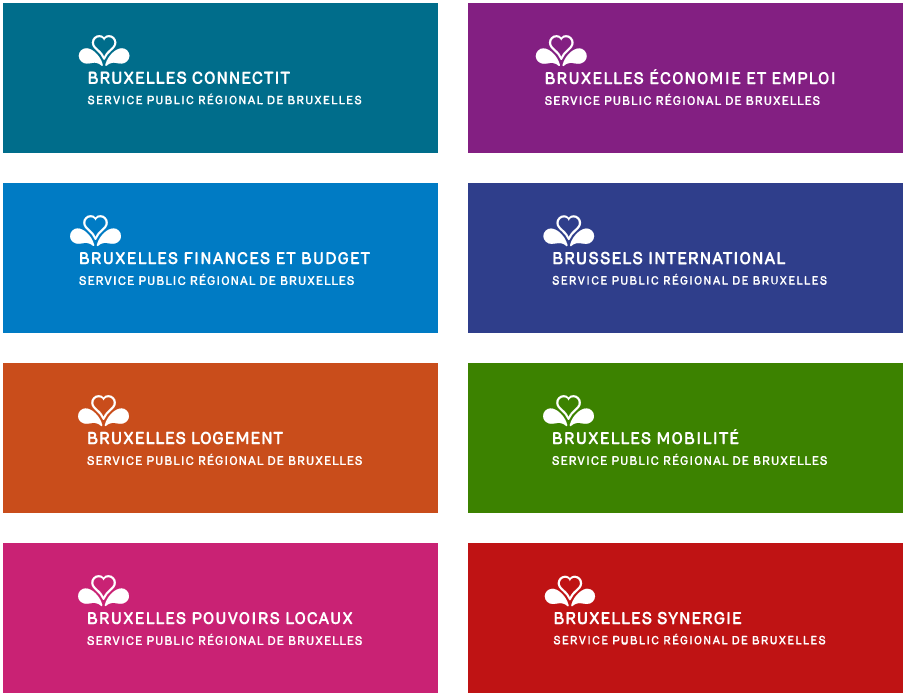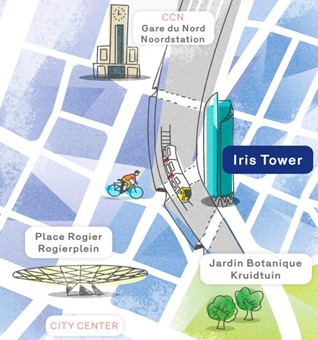Marc Bouillon
Marc Bouillon, CIO at Fédérale Assurances shares his customer experience for the development of business applications as well as for third-party application maintenance. A collaboration that started in 2008.
Laurent Dewaele, IT Project Manager, IT Coordination Division,
Personally, I’ve been working in IT for over 20 years; it’s always been my field. Nearly 8 years ago, I joined the IRISTeam, which is part of the CIRB (Centre Informatique Régional Bruxellois/Brussels Regional IT Centre) and I have been seconded full time to the SPRB.
As an organisation, the SPRB is divided into 8 different administrations: Bruxelles Mobilité (Mobility), Bruxelles Finance & Budget, Bruxelles Economie & Emploi (Economy and Employment), Brussels International (such as export licences for weapons), Bruxelles Logement (Housing), Bruxelles Synergie (General Services that are also provided to other administrations in the Brussels region), Bruxelles Pouvoirs Locaux (Local Authorities) and Bruxelles Connectit (administration for IT, administrative simplification and archives).

NSI has been a SPRB partner for a few years in various fields and on various projects. Actually, NSI partners many public service administrations, including ours.
In fact, the first contract with NSI concerned "Bruxelles Export" - at the time, this involved managing exporters and, more specifically, renewing the system (already implemented by NSI federally and in AWEX). The rights for this had been conceded by the Wallonia Region to the SPRB.
NSI also took part in another huge project: "OSIRIS" which managed coordination of recipients and sites for Bruxelles Mobilité and other external entities. Of course, this project is very broad and particularly involves mapping. Finally, there were the Atlassian projects.
Bruxelles Mobilité had been working on the project for a very long time; more of a business project than a technical issue as it involved customer guidance. It took five or six years to design a management system to centralise customer requests. The first action was to organise a freephone number and implement the processes. An organisation study was run to model the flows in computer terms. That took around two years because it was so complex...
The aim was really rationalisation in terms of communication, to manage problems, tickets, all the information that might flow in or out of the Bruxelles Mobilité administration; but of course, there had to be a system behind that that was going to implement it all for the general public. This refers to phone calls, e-mails, anonymous forms from the Bruxelles Mobilité website; with a service desk behind it all. The communication channels were rationalised to improve the structure; so we put out a procurement contract.
When the call for bids was announced, there were three possible options to apply for it: either using customised development, or a development workshop to be implemented or even a configured software package. The constraints revolved around the market, such as interfacing, integration, ... One important criterion for the follow-on was that, regardless of the solution chosen, for any service desk type problem issue, it must be reusable without having to select products again. NSI won the contract and suggested using JIRA and Confluence tools from the Atlassian suite.
What we immediately liked was the standardisation aspect;
“NSI tried to reduce the customised developments as much as possible.”
and to rely on an ecosystem of existing modules in the JIRA community, certified by Atlassian. This made it possible to buy licences for these modules, configure them and implement them. Therefore, NSI came in with a well-documented system and helped us to set it up.
“NSI proved to us that the product was agile, and that they were as well.”
We also had to address organisational issues that had created havoc to a certain extent in the strategy; and that happened while we set up the project. Nevertheless, it all stayed within budget and NSI proved to us that the product was agile, and that they were as well.
It’s a 9-month project that was more challenging in terms of ‘change management’ than IT. We were very happy with the NSI consultants who not only knew the product inside-out, but were also familiar with the processes in a service desk context.
This project included an integration series, such as ‘Fix my street’ which allowed citizens or pro users to report incidents on the road system. The report arrives in the ‘Prego’ system, is directly identified, classified by the service desk, transferred, if necessary, to second line teams, … Integration is two-way: when the ticket changes, the citizen is notified. It was this project that brought the Atlassian suite into our organisation.
We subsequently promoted it in-house; as the existing platform was built in modules...
There was a problem issue for General Services along the lines of “how can we offer a catalogue of services to the in-house administration?” This led to the ‘Be Connected’ operation, a major project which involved moving to the ‘Iris Tower’. It was an amazing opportunity – we really had to rely on the platform. Apart from improving our services, the Iris Tower project also helped us centralise services and offer SPRB agents a more suitable workplace which was, of course, more connected. The platform was a real help when we moved as there is also an ‘asset’ management part which kept us one step ahead.
The project was called ’SSP’ or ‘Single Service Point’ and the call for bids was launched in JIRA this time, won by NSI.

Today, 4 projects or functional sets are running on the platform; we currently have around 500 licences and almost 2,000 people use it. In terms of volume, over 6 months, we have already processed around 20,000 tickets. Apart from the IT implemented in June 2020 – earlier than envisaged (in November) and which represents 75% of tickets, the platform is also used for Facilities, HR or even translation fields.
In the future, the idea of a ‘shift to the left’ in the IT field should allow agents themselves to find the answers to their questions or the solution to their problem.
The project is constantly evolving, and new subjects are always on the table or being studied.
Of course! It’s difficult to talk figures... Although, in terms of information quality and the follow-up, it’s unbeatable and of course, we can free up our workers’ time!
“I honestly think we’ve hit our major goal: offering everyone, in-house users, external users or even the public, better quality service, the certainty of always getting a response in the best time-frame.”
So, to provide more services, we did not have to commit or increase the framework.
I’d say that in these times that were rocked a little by Covid, the project was affected, but positively so!
In the end, I realised that remote workers were a lot more implicated; on the other hand, of course, in terms of testing jobs, there are things that we see now that we could have seen before.
In terms of planning, there has been no impact and yet, the NSI Project Leader and I had a few concerns. Another thing, we see that NSI has worked hard to make remote working a success, meetings, training, etc. I have seen the training for the SSP and Prego projects, and it was completely different. The way of giving digital training, for example, is very important to engage users with the solution because if the users are not properly trained, it is the run team behind them that has to manage it. NSI has really adapted, and their remote training is a true success.
“The implication from NSI and its consultants was remarkable.”

Laurent Dewaele - IT Project Manager
IT Coordination Division
Le but était vraiment de rationaliser en termes de communication, pour la gestion des problèmes, des tickets, toutes les informations qui pouvaient entrer et sortir de l’administration Bruxelles Mobilité ; mais derrière, bien sûr, il fallait mettre en place un système qui allait implémenter tout cela à destination du grand public.
Il s’agit d’appels téléphoniques, de mails, de formulaires anonymes au départ du portail de Bruxelles Mobilité ; avec un service desk derrière.
“We’ve hit our major goal: offering everyone, in-house users, external users or even the public, better quality service, the certainty of always getting a response in the best time-frame.”
Marc Bouillon, CIO at Fédérale Assurances shares his customer experience for the development of business applications as well as for third-party application maintenance. A collaboration that started in 2008.
For many years we have been continuously developing our management solution. Lately, emphasis has been placed on electronic communications with customers and suppliers
With NSI, we work on projects such as server virtualization, networks, etc. Everything related to infrastructure in fact.